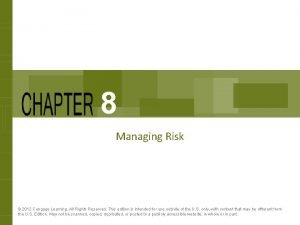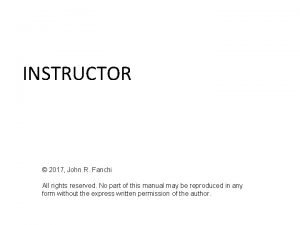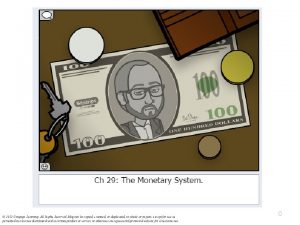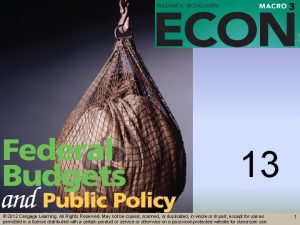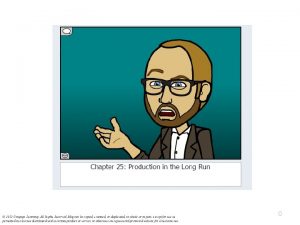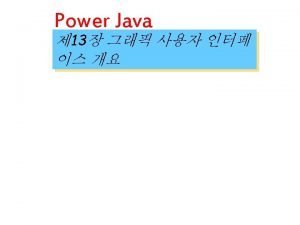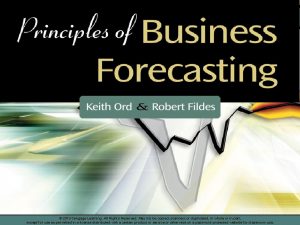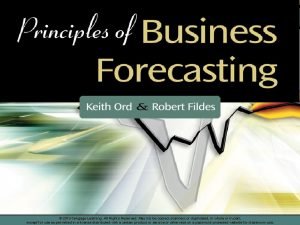16 2012 Cengage Learning All Rights Reserved May































- Slides: 31

16 © 2012 Cengage Learning. All Rights Reserved. May not be copied, scanned, or duplicated, in whole or in part, except for use as permitted in a license distributed with a certain product or service or otherwise on a password-protected website for classroom use. 1

The Demand for Money • Demand for money – Relationship between the interest rate – And how much money people want to hold • People demand money – To make purchases • Money – Carry out economic transactions – Easily and efficiently © 2012 Cengage Learning. All Rights Reserved. May not be copied, scanned, or duplicated, in whole or in part, except for use as permitted in a license distributed with a certain product or service or otherwise on a password-protected website for classroom use. 2

The Demand for Money • More active economy – More goods and services exchanged – More money demanded • The higher the price level – Greater the demand for money • Money – Medium of exchange – Store of value • Liquidity © 2012 Cengage Learning. All Rights Reserved. May not be copied, scanned, or duplicated, in whole or in part, except for use as permitted in a license distributed with a certain product or service or otherwise on a password-protected website for classroom use. 3

The Demand for Money • Opportunity cost of holding money – Interest forgone • Quantity of money demanded – Inversely: market interest rate • Money demand curve – Downward slope – The lower interest rate • The lower opportunity cost of holding money © 2012 Cengage Learning. All Rights Reserved. May not be copied, scanned, or duplicated, in whole or in part, except for use as permitted in a license distributed with a certain product or service or otherwise on a password-protected website for classroom use. 4

Exhibit 1 Interest rate Demand for Money Dm 0 The money demand, Dm, slopes downward. As the interest rate falls, other things constant, so does the opportunity cost of holding money; the quantity of money demanded increases. Quantity of money © 2012 Cengage Learning. All Rights Reserved. May not be copied, scanned, or duplicated, in whole or in part, except for use as permitted in a license distributed with a certain product or service or otherwise on a password-protected website for classroom use. 5

The Supply of Money • Supply of money – Stock of money – In economy – A particular time • Determined by the Fed – Vertical line • Independent of interest rate © 2012 Cengage Learning. All Rights Reserved. May not be copied, scanned, or duplicated, in whole or in part, except for use as permitted in a license distributed with a certain product or service or otherwise on a password-protected website for classroom use. 6

Equilibrium Interest Rate • Equilibrium interest rate – Demand for money – Supply of money • Interest rates – Above equilibrium • Higher opportunity cost of holding money – Below equilibrium • Lower opportunity cost of holding money © 2012 Cengage Learning. All Rights Reserved. May not be copied, scanned, or duplicated, in whole or in part, except for use as permitted in a license distributed with a certain product or service or otherwise on a password-protected website for classroom use. 7

Equilibrium Interest Rate • Given money demand curve – Increase money supply • Lower interest rate – Decrease money supply • Higher interest rate © 2012 Cengage Learning. All Rights Reserved. May not be copied, scanned, or duplicated, in whole or in part, except for use as permitted in a license distributed with a certain product or service or otherwise on a password-protected website for classroom use. 8

Exhibit 2 Interest rate Effect of an Increase in the Money Supply Sm S’m a i b i’ Dm 0 M M’ Quantity of money Because the money supply is determined by the Federal Reserve, it can be represented by a vertical line. At point a, the intersection of the money supply, S m, and the money demand, Dm, determines the market interest rate, i. Following an increase in the money supply to S’m, the quantity of money supplied exceeds the quantity demanded at the original interest rate, i. The new equilibrium occurs at point b. © 2012 Cengage Learning. All Rights Reserved. May not be copied, scanned, or duplicated, in whole or in part, except for use as permitted in a license distributed with a certain product or service or otherwise on a password-protected website for classroom use. 9

Money and AD in Short Run • Short run – Money affects the economy – Through changes in interest rate • The Fed – Wants to stimulate output and employment – By increasing the money supply – Open-market purchases © 2012 Cengage Learning. All Rights Reserved. May not be copied, scanned, or duplicated, in whole or in part, except for use as permitted in a license distributed with a certain product or service or otherwise on a password-protected website for classroom use. 10

Money and AD in Short Run • Open-market purchases – Money supply – increases – Interest rate – reduced – Investment – stimulated – Aggregate demand – increase – Real GDP – increases © 2012 Cengage Learning. All Rights Reserved. May not be copied, scanned, or duplicated, in whole or in part, except for use as permitted in a license distributed with a certain product or service or otherwise on a password-protected website for classroom use. 11

Effects of an Increase in the Money Supply on Interest Rates, Investment, and AD Sm S’m a i (b) Demand for investment a i b i’ Dm (c) Aggregate demand Price level (a) Supply and demand for money Interest rate Exhibit 3 P b i’ b a AD’ AD DI 0 M M’ Money 0 I I’ Investment 0 Y Y’ Real GDP In panel (a), an increase in the money supply forces the interest rate down to i’. With the cost of borrowing lower, the amount invested increases from I to I’, as shown in panel (b). This sets off the spending multiplier process, so the aggregate output demanded at price level P increases from Y to Y’. The increase is shown by the shift of the aggregate demand curve to the right in panel (c). © 2012 Cengage Learning. All Rights Reserved. May not be copied, scanned, or duplicated, in whole or in part, except for use as permitted in a license distributed with a certain product or service or otherwise on a password-protected website for classroom use. 12

Money and AD in Short Run • The Fed – Wants to cool down the economy – Decrease the money supply • Open-market sale – Money supply – decreases – Interest rate – increases – Investment – reduced – Aggregate demand – decreases – Real GDP – decreases © 2012 Cengage Learning. All Rights Reserved. May not be copied, scanned, or duplicated, in whole or in part, except for use as permitted in a license distributed with a certain product or service or otherwise on a password-protected website for classroom use. 13

Adding the SRAS Curve • Aggregate supply curve in the short run (SRAS) – Slopes upward – The quantity supplied increases only if the price level increases • For a given shift of AD curve – The steeper the SRAS curve – The smaller the increase in real GDP – The larger the increase in the price level © 2012 Cengage Learning. All Rights Reserved. May not be copied, scanned, or duplicated, in whole or in part, except for use as permitted in a license distributed with a certain product or service or otherwise on a password-protected website for classroom use. 14

Adding the SRAS Curve • Contractionary gap – Output < potential – Price level < expected • Wages > negotiated • The Fed: expansionary monetary policy – Stimulate AD • Increase money supply – Equilibrium © 2012 Cengage Learning. All Rights Reserved. May not be copied, scanned, or duplicated, in whole or in part, except for use as permitted in a license distributed with a certain product or service or otherwise on a password-protected website for classroom use. 15

Exhibit 4 Expansionary Monetary Policy to Close a Recessionary Gap Price level Potential output LRAS SRAS 110 b 110 a 105 AD’ AD 0 13. 8 14. 0 At point a, the economy is producing less than its potential in the short run, resulting in a recessionary gap of $0. 2 trillion. If the Federal Reserve increases the money supply by just the right amount, the aggregate demand curve shifts rightward from AD to AD’. A short-run and long-run equilibrium is established at point b, with the price level at 110 and output at the potential level of $14. 0 trillion. Real GDP (trillions of dollars) Recessionary gap © 2012 Cengage Learning. All Rights Reserved. May not be copied, scanned, or duplicated, in whole or in part, except for use as permitted in a license distributed with a certain product or service or otherwise on a password-protected website for classroom use. 16

Money and AD in Long Run • Equation of exchange – Buyer: exchanges money for goods – Seller: exchanges goods for money • M – quantity of money in economy • V – velocity of money • P – average price level • Y – real GDP © 2012 Cengage Learning. All Rights Reserved. May not be copied, scanned, or duplicated, in whole or in part, except for use as permitted in a license distributed with a certain product or service or otherwise on a password-protected website for classroom use. 17

Money and AD in Long Run • Quantity theory of money – If V is stable (predictable) – Equation of exchange – Predicts effects of • Changes in money supply • On Nominal GDP, PˣY • Long-run, stable velocity – An increase in money supply – Higher prices © 2012 Cengage Learning. All Rights Reserved. May not be copied, scanned, or duplicated, in whole or in part, except for use as permitted in a license distributed with a certain product or service or otherwise on a password-protected website for classroom use. 18

Exhibit 5 Price level In the Long Run, an Increase in the Money Supply Results in a Higher Price Level, or Inflation Potential output LRAS 120 b 110 a AD’ AD 0 14. 0 The quantity theory of money predicts that if velocity is stable, then an increase in the money supply in the long run results in a higher price level, or inflation. Because the long-run aggregate supply curve is fixed, increases in the money supply affect only the price level, not real output. Real GDP (trillions of dollars) © 2012 Cengage Learning. All Rights Reserved. May not be copied, scanned, or duplicated, in whole or in part, except for use as permitted in a license distributed with a certain product or service or otherwise on a password-protected website for classroom use. 19

Money and AD in Long Run • Velocity depends on – Customs and convention of commerce • Innovations facilitate exchange • Higher velocity – Frequency • The more often workers get paid – Higher velocity – Stability (store of value) • The better store of value – Lower velocity © 2012 Cengage Learning. All Rights Reserved. May not be copied, scanned, or duplicated, in whole or in part, except for use as permitted in a license distributed with a certain product or service or otherwise on a password-protected website for classroom use. 20

Money and AD in Long Run • Velocity – M 1 velocity • Bouncy – M 2 velocity • More stable • The Fed, since 1993 – Equation of exchange • Rough guide linking changes in the money supply to inflation in the long run © 2012 Cengage Learning. All Rights Reserved. May not be copied, scanned, or duplicated, in whole or in part, except for use as permitted in a license distributed with a certain product or service or otherwise on a password-protected website for classroom use. 21

Exhibit 6 The Velocity of Money M 1 velocity fluctuated so much during the 1980 s that M 1 growth was abandoned as a short-run policy target © 2012 Cengage Learning. All Rights Reserved. May not be copied, scanned, or duplicated, in whole or in part, except for use as permitted in a license distributed with a certain product or service or otherwise on a password-protected website for classroom use. 22

Exhibit 6 The Velocity of Money M 2 velocity appears more stable than M 1 velocity, but both are now considered by the Fed as too unpredictable for short-run policy use. © 2012 Cengage Learning. All Rights Reserved. May not be copied, scanned, or duplicated, in whole or in part, except for use as permitted in a license distributed with a certain product or service or otherwise on a password-protected website for classroom use. 23

Targets for Monetary Policy • Short-run: Interest rate • Long-run: Price level • Money market: equilibrium – Increase money demand curve • The Fed – target money supply – Does nothing – Increase interest rate • The Fed – target interest rate – Increase money supply © 2012 Cengage Learning. All Rights Reserved. May not be copied, scanned, or duplicated, in whole or in part, except for use as permitted in a license distributed with a certain product or service or otherwise on a password-protected website for classroom use. 24

Exhibit 7 Targeting Interest Rates Versus Targeting the Money Supply Interest rate Sm e’ i’ i S’m e e’’ D’m Dm 0 M M’ Quantity of money An increase in the price level or in real GDP, with velocity stable, shifts rightward the money demand curve from Dm to D’m. If the Federal Reserve holds the money supply at Sm, the interest rate rises from i (at point e) to i’ (at point e’). Alternatively, the Fed could hold the interest rate constant by increasing the money supply to S’m. The Fed may choose any point along the money demand curve D’m. © 2012 Cengage Learning. All Rights Reserved. May not be copied, scanned, or duplicated, in whole or in part, except for use as permitted in a license distributed with a certain product or service or otherwise on a password-protected website for classroom use. 25

Targets for Monetary Policy • Targets before 1982 – Stabilize interest rates – October 1979: target money aggregates • Volatile interest rates • Sharp reduction in money growth, 1981 • Recession, 1982 • Declining inflation • Rising unemployment © 2012 Cengage Learning. All Rights Reserved. May not be copied, scanned, or duplicated, in whole or in part, except for use as permitted in a license distributed with a certain product or service or otherwise on a password-protected website for classroom use. 26

Targets for Monetary Policy • Targets after 1982 – Financial innovations – Deregulation – Not a target: money aggregates – Target: federal funds rate © 2012 Cengage Learning. All Rights Reserved. May not be copied, scanned, or duplicated, in whole or in part, except for use as permitted in a license distributed with a certain product or service or otherwise on a password-protected website for classroom use. 27

Targets for Monetary Policy • Other Fed actions and concerns – Invested in AIG • So the giant insurer would not fail and drag other companies down with it – Invested more than $1 trillion in mortgage -backed securities • To keep mortgage rates low and offer liquidity in that troubled market © 2012 Cengage Learning. All Rights Reserved. May not be copied, scanned, or duplicated, in whole or in part, except for use as permitted in a license distributed with a certain product or service or otherwise on a password-protected website for classroom use. 28

Targets for Monetary Policy • Other Fed actions and concerns – Worked with the U. S. Treasury and with other regulators • To stabilize banks and thaw frozen credit lines – Worked with the U. S. Treasury and other regulators • Stress test of the 19 largest banks • To determine which ones needed more financial capital to weather a bad economy © 2012 Cengage Learning. All Rights Reserved. May not be copied, scanned, or duplicated, in whole or in part, except for use as permitted in a license distributed with a certain product or service or otherwise on a password-protected website for classroom use. 29

Targets for Monetary Policy • Stress test – Bank regulators assessed the soundness of large banks – To determine which ones needed more financial capital • To weather a bad economy © 2012 Cengage Learning. All Rights Reserved. May not be copied, scanned, or duplicated, in whole or in part, except for use as permitted in a license distributed with a certain product or service or otherwise on a password-protected website for classroom use. 30

Targets for Monetary Policy • International considerations – Mexico, financial difficulties 1982, 1994 • The Fed – loans – 1998, defaults on Russian bonds • The Fed – lower federal funds rate • Liquidity here and abroad – 2007 -2009, world-wide shortage of credit • Mortgage defaults in US • The Fed - liquidity © 2012 Cengage Learning. All Rights Reserved. May not be copied, scanned, or duplicated, in whole or in part, except for use as permitted in a license distributed with a certain product or service or otherwise on a password-protected website for classroom use. 31
 2012 cengage learning
2012 cengage learning Specification by example
Specification by example Copyright 2015 all rights reserved
Copyright 2015 all rights reserved All rights reserved sentence
All rights reserved sentence Creative commons vs all rights reserved
Creative commons vs all rights reserved Confidential all rights reserved
Confidential all rights reserved Sentinel value
Sentinel value Copyright 2015 all rights reserved
Copyright 2015 all rights reserved Pearson education inc all rights reserved
Pearson education inc all rights reserved Microsoft corporation. all rights reserved.
Microsoft corporation. all rights reserved. Microsoft corporation. all rights reserved.
Microsoft corporation. all rights reserved. Microsoft corporation. all rights reserved.
Microsoft corporation. all rights reserved. Pearson education inc. all rights reserved
Pearson education inc. all rights reserved Dell all rights reserved copyright 2009
Dell all rights reserved copyright 2009 Warning all rights reserved
Warning all rights reserved All rights reserved c
All rights reserved c Quadratic equation cengage
Quadratic equation cengage Warning all rights reserved
Warning all rights reserved Confidential all rights reserved
Confidential all rights reserved Microsoft corporation. all rights reserved
Microsoft corporation. all rights reserved 2010 pearson education inc
2010 pearson education inc Copyright © 2018 all rights reserved
Copyright © 2018 all rights reserved 2017 all rights reserved
2017 all rights reserved Pearson education inc all rights reserved
Pearson education inc all rights reserved Pearson education inc. all rights reserved
Pearson education inc. all rights reserved Confidential all rights reserved
Confidential all rights reserved Airbus deutschland gmbh
Airbus deutschland gmbh R rights reserved
R rights reserved Rights reserved
Rights reserved Chapter 6:2 interpreting word parts
Chapter 6:2 interpreting word parts Cengage chapter 5
Cengage chapter 5 Cengage learning heart diagram
Cengage learning heart diagram
